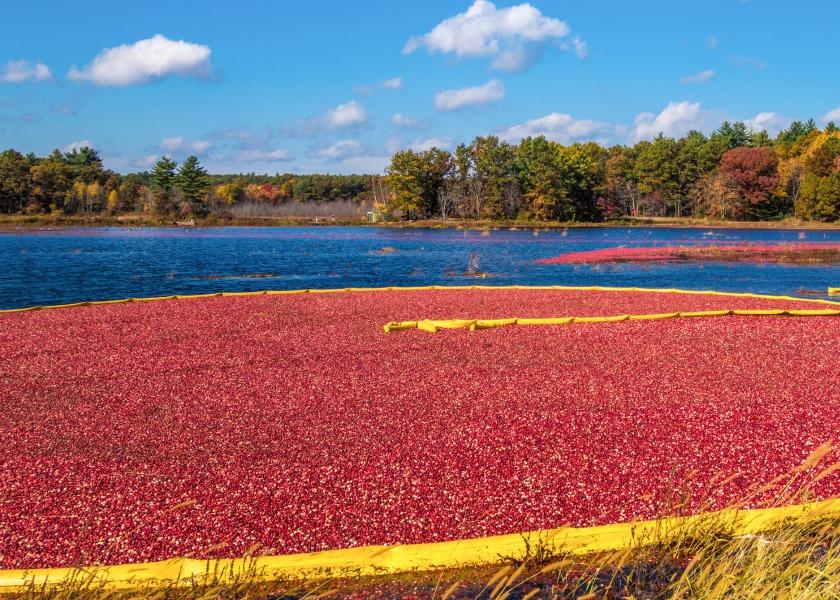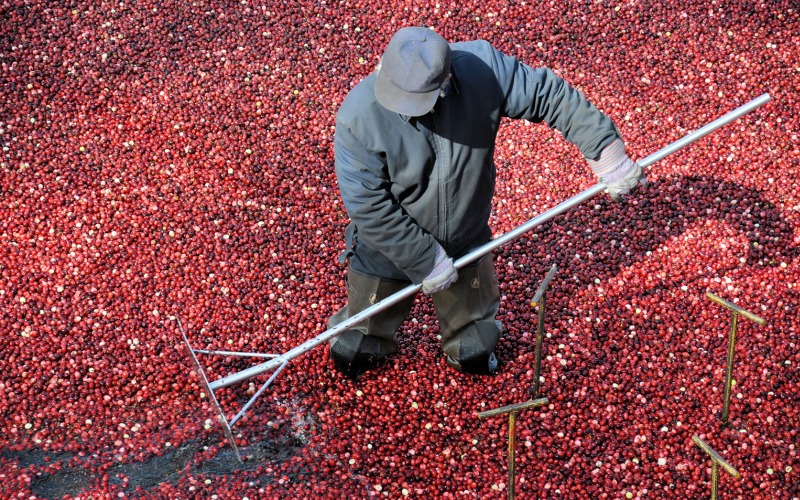Pest-killing nematodes offer an insecticide alternative for cranberry growers

If the thought of cranberries evokes images of holiday tables and warming winter sauces and drinks, it’s for a good reason. The bright red berry is a fall and winter seasonal favorite, with about 20% of U.S. cranberries consumed at Thanksgiving alone, according to the USDA.
Growing these ruby red berries in cranberry bogs, however, is a uniquely challenging endeavor. Cranberries are grown in a unique freshwater wetland, with the fruit maturing on cranberry vines, or runners, on a mat-like top layer of the bog’s surface.
The wet, marshy conditions of a cranberry bog present a breeding ground ripe for pests.
To combat the beetles and fruit worms that attack cranberry crops, according to the USDA Agricultural Research Service, many cranberry growers rely on chemical insecticides, with atypical insecticide treatment costing up to $100 per acre.
ARS researchers Shawn Steffan and David I. Shapiro-Ilan are working to introduce some nonchemical alternatives to control cranberry bog pests.
“Many cranberry growers are very interested in having new tools to control pests, especially tools that can reduce their use of pesticides,” Steffan, at ARS’ Vegetable Crops Research Unit in Madison, Wis., said in a news release.
One possible pesticide alternative? Two nematodes native to Wisconsin that show signs that they can effectively control cranberry pests.

A mighty, pest-killing worm
Over the past three years, Steffan discovered that a previously identified nematode found in Wisconsin soils offers tremendous potential as a biocontrol agent. It kills several major cranberry pests, including the dreaded red-headed flea beetle and the sparganothis fruit worm (also known as Sparg) in less than 72 hours, according to the release.
Steffan has found that when several species of nematodes are applied to the soil and watered, they appear to be just as effective at controlling cranberry pests as two insecticide applications.
This is welcome news in Wisconsin, where growing cranberries — the official state fruit — are a $1 billion industry. The state produces more than 60% of the U.S. cranberry supply, according to the release.
Deploying nematodes in U.S. cranberry bogs
Additional studies are planned, but preliminary results show that the two nematodes should be effective in cranberry production throughout the U.S. and could be useful in controlling pests among blueberries and other crops, Steffan said in the release.
They wouldn’t be the first nematodes used as biocontrols. Dozens of nematode species attack insect pests, and 12 types of them are now used in commercial products to control thrips, citrus weevils, black vine weevils, borers and other pests, according to Shapiro-Ilan, an ARS entomologist with the Southeastern Fruit and Tree Nut Research Laboratory in Byron, Ga.
“Most of these nematodes can kill a wide range of insect pests, but they won’t hurt plants, people, or the environment,” Shapiro-Ilan said in the release.
What’s more, nematodes don’t pose threat to ladybugs, honeybees or other beneficial insects.
Steffan and Shapiro-Ilan are developing an inexpensive, portable production system that cranberry growers could use to mass produce nematodes so they can apply them with the same equipment they now use to spray insecticides, according to the release.







